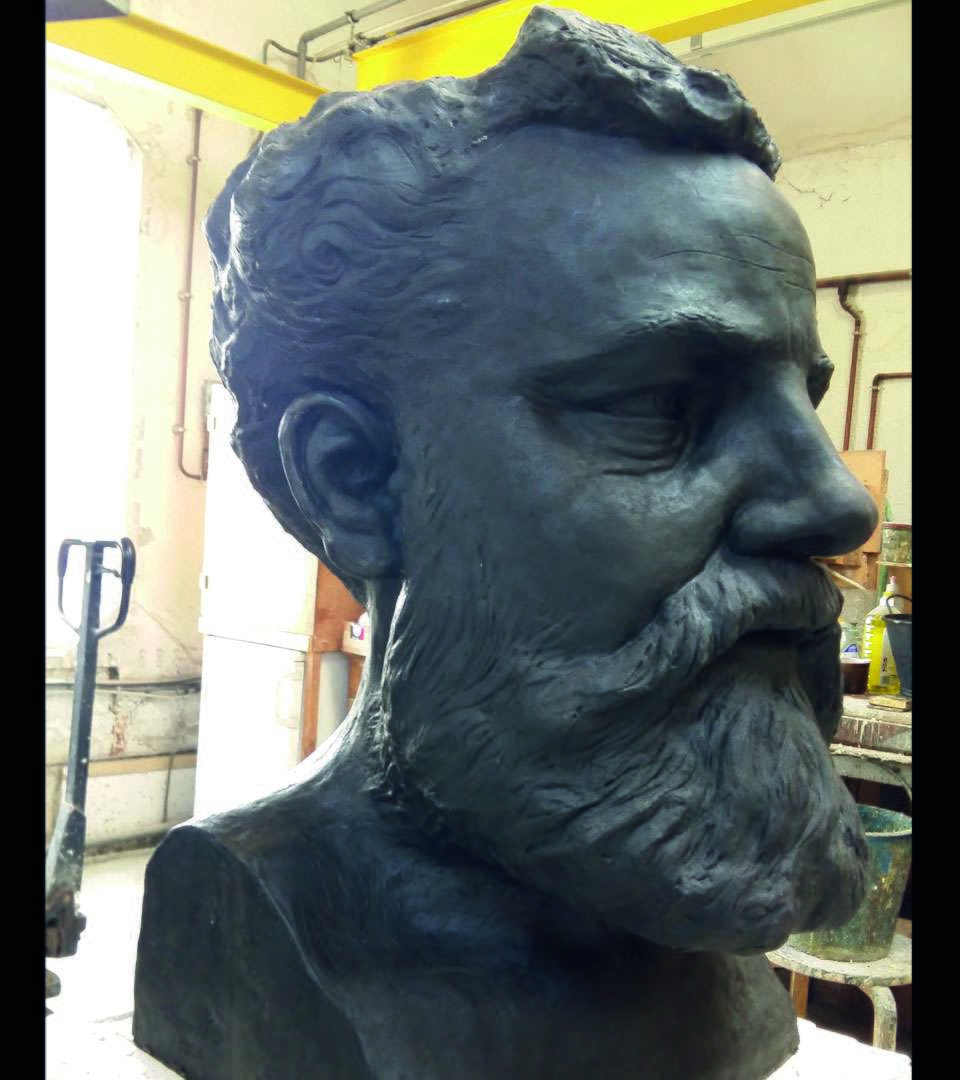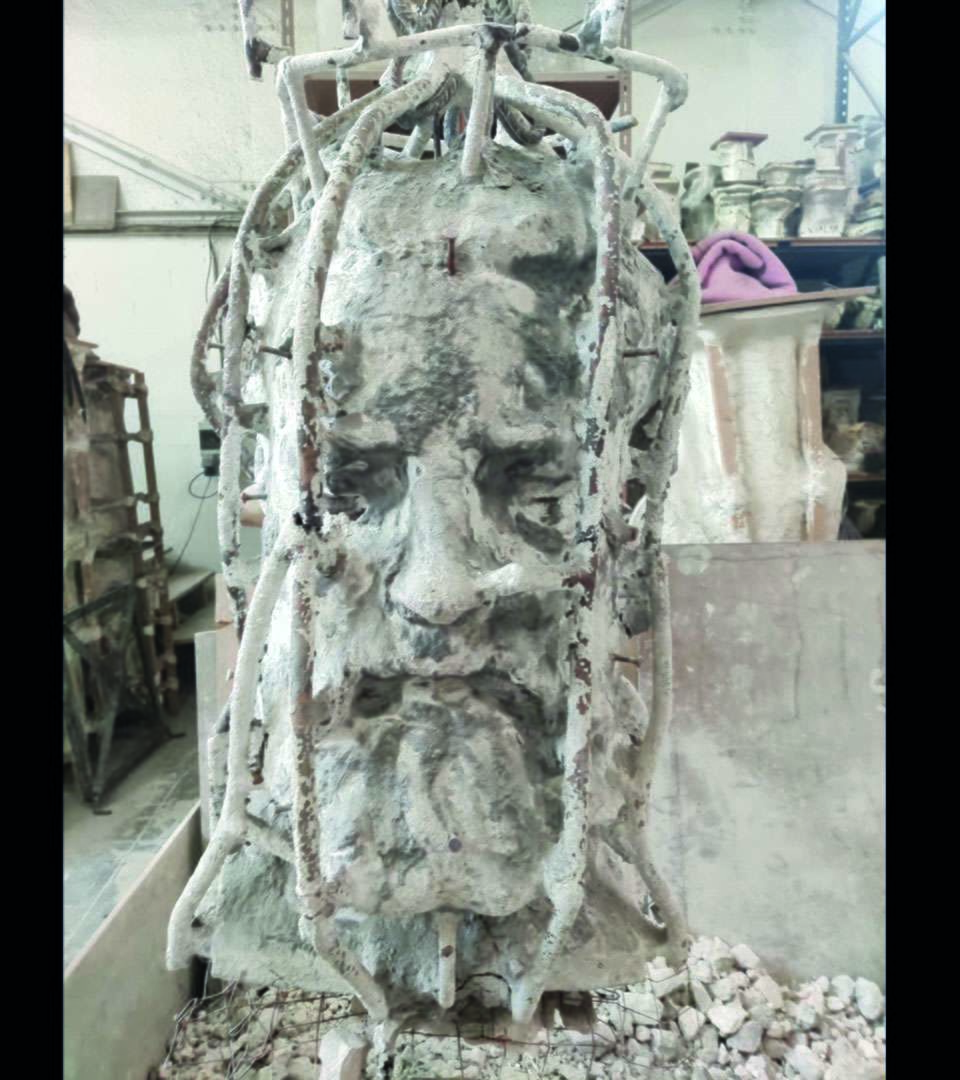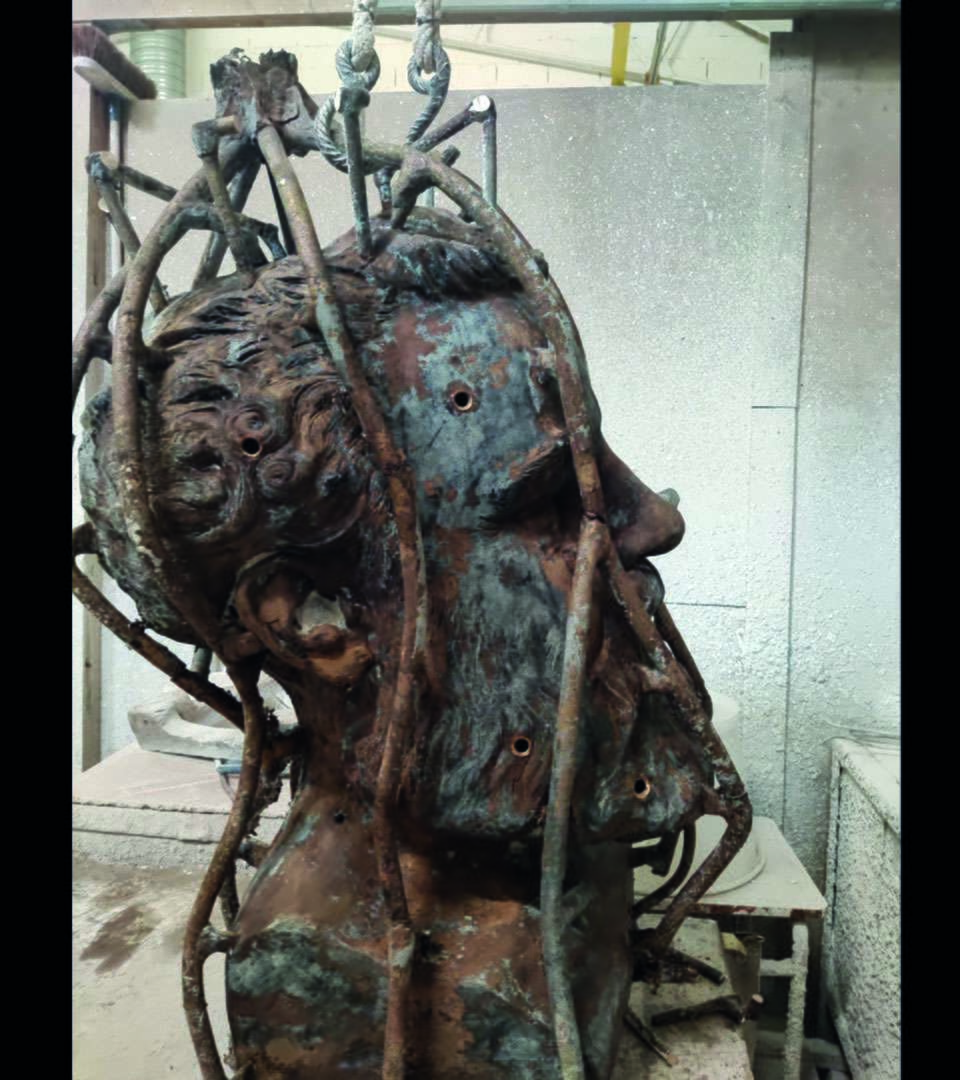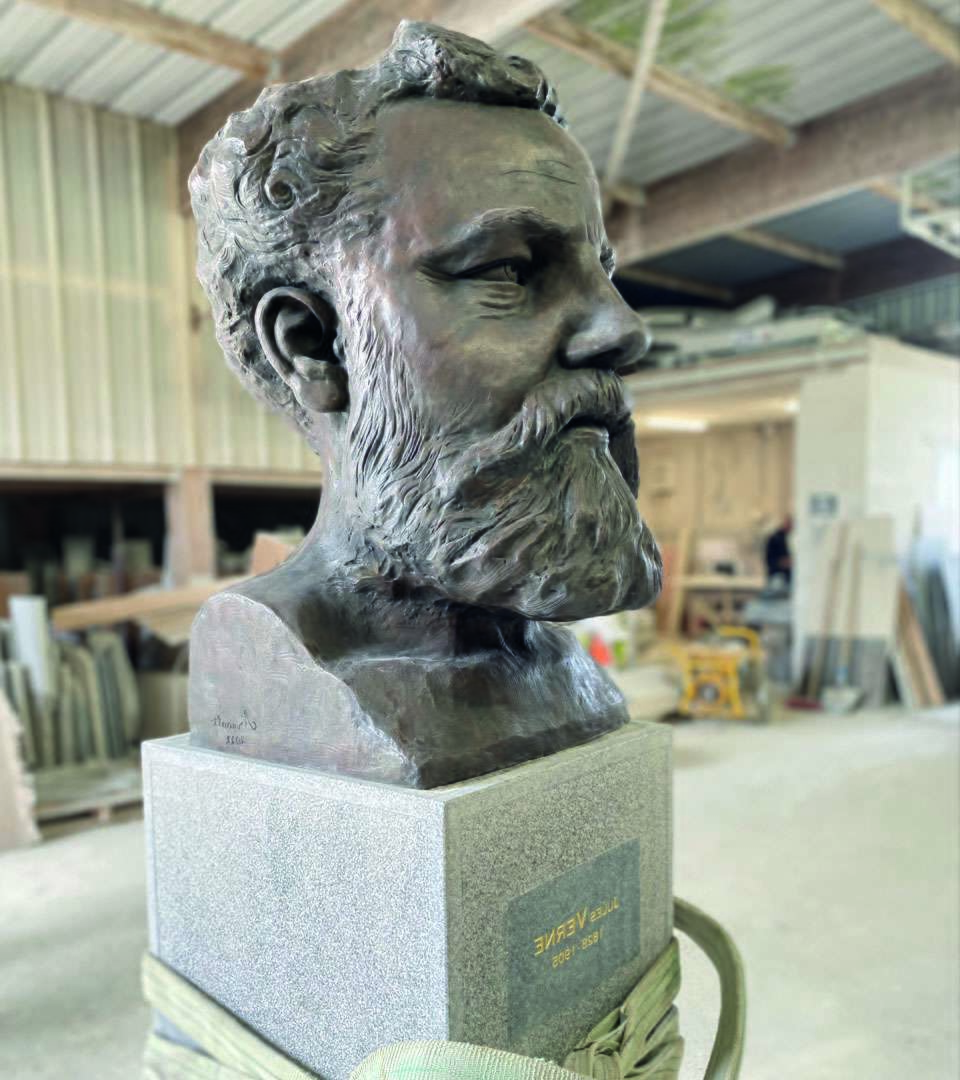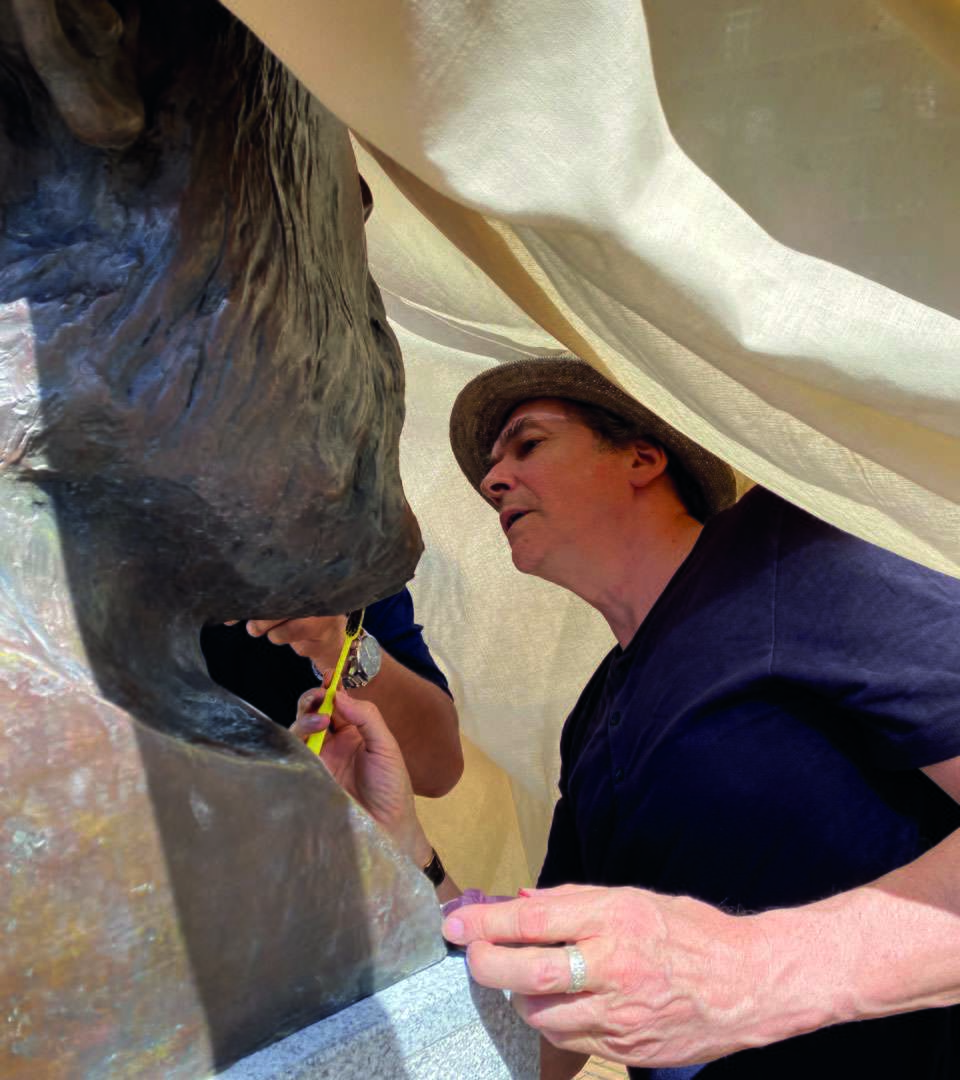"The town council wanted a bronze bust 80 cm high, with its pedestal. So I quickly set about constructing the idea of modelling a monumental likeness, so that all the interest is focused on the splendid writer’s head, and his gaze full of kindness and intelligence.
I also decided to create this depiction in the Roman style, to avoid any frock coat or lavallière neck tie, and so place the writer outside his timeframe; a Jules Verne, the great prophet, gazing towards his city and towards the future; since both by writing his books and by setting out to create the static circus of Amiens, the writer was always ahead of his time.
I wanted to model and ultimately build a very large bust to reflect the work of this titan of literature, and for it to look good, with a warm patina; and here it is! But there was plenty of doubt before that, with my 100 kilos of clay to shape. I should also mention that at one point, I felt a little overwhelmed by the size I had given to the representation.
Feeling overwhelmed by the task is no bad thing, but added to that, time was pressing! I had to act quickly. A modelling frenzy took hold of me! Because immediately after that came the plaster casting, double-quick; then ready for the elastomer moulding by the foundry; next, bronze casting, again in a hurry; its patina; and finally, preparing the pedestal, its installation on Wednesday 22 June 2022, and sealing the bust ... that same day, the big day. All this in less than 9 months, or 275 days; a challenge that would have impressed the man we honour today!
I hope I didn’t fall short in my task for this work that was so close to my heart, and I hope that the people of Amiens will welcome this sculpture with interest, goodwill ... in their usual "Amien-able" way ... no pun intended..."
Philippe ARNAULT,
Excerpt from the speech delivered at the unveiling on 23 June 2022.
23 june
23 June is a symbolic date, because it corresponds to the inauguration of the Cirque d'Amiens (circus), in 1889, by Jules Verne, who became a municipal councillor a year earlier. He was elected for 16 years, until 1904.
Consisting of a 1.20-metre pedestal in corked granite, on which stands a bronze bust 80 cm high, which represents Jules Verne aged about fifty years. It was made from photographs, including those by Félix Nadar.
Sculptor: Philippe Arnault
Caster: Jean-Marc Bodin (Peyrefitte-sur-Seine)
Philippe Arnault was born on 24 April 1957 in Châtellerault (Vienne).
He studied at the Beaux-Arts in Paris, in the drawing and sculpture sections, and is a teacher at the workshops of the City of Boulogne-Billancourt.
The sculptor received the 1st David Weill Prize for Drawing from the Institute of France and the Casa Velázquez Prize in Madrid.
He received a medal of honour from the Salon des Artistes Français and is a member of the jury.
Finally, he has received official medals from the Quai d'Orsay (Ministry of Foreign Affairs) and the Diplomatic Archives.
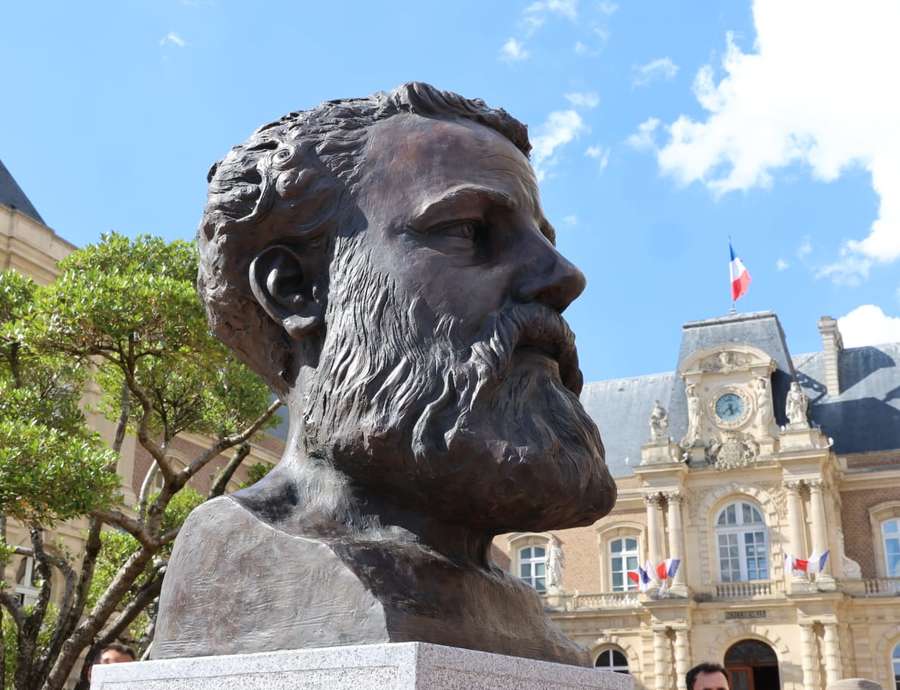
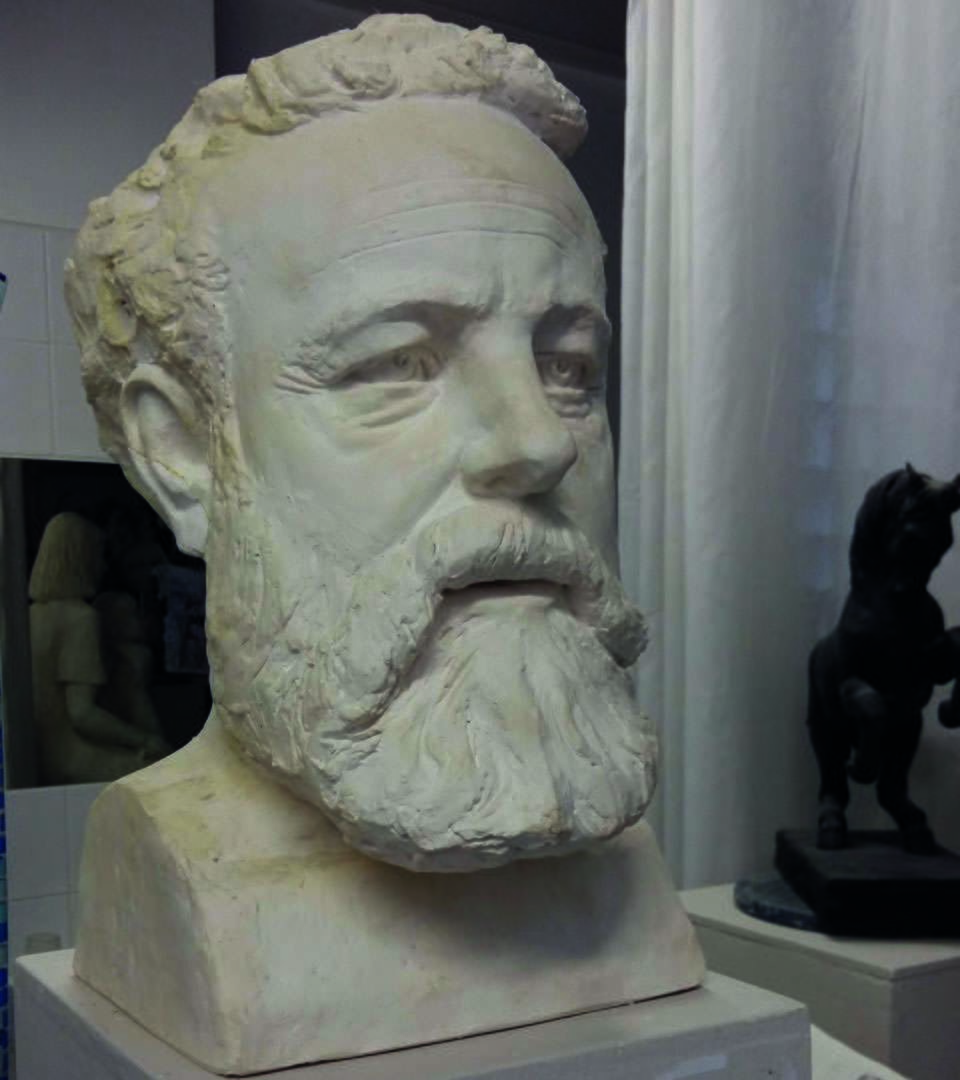
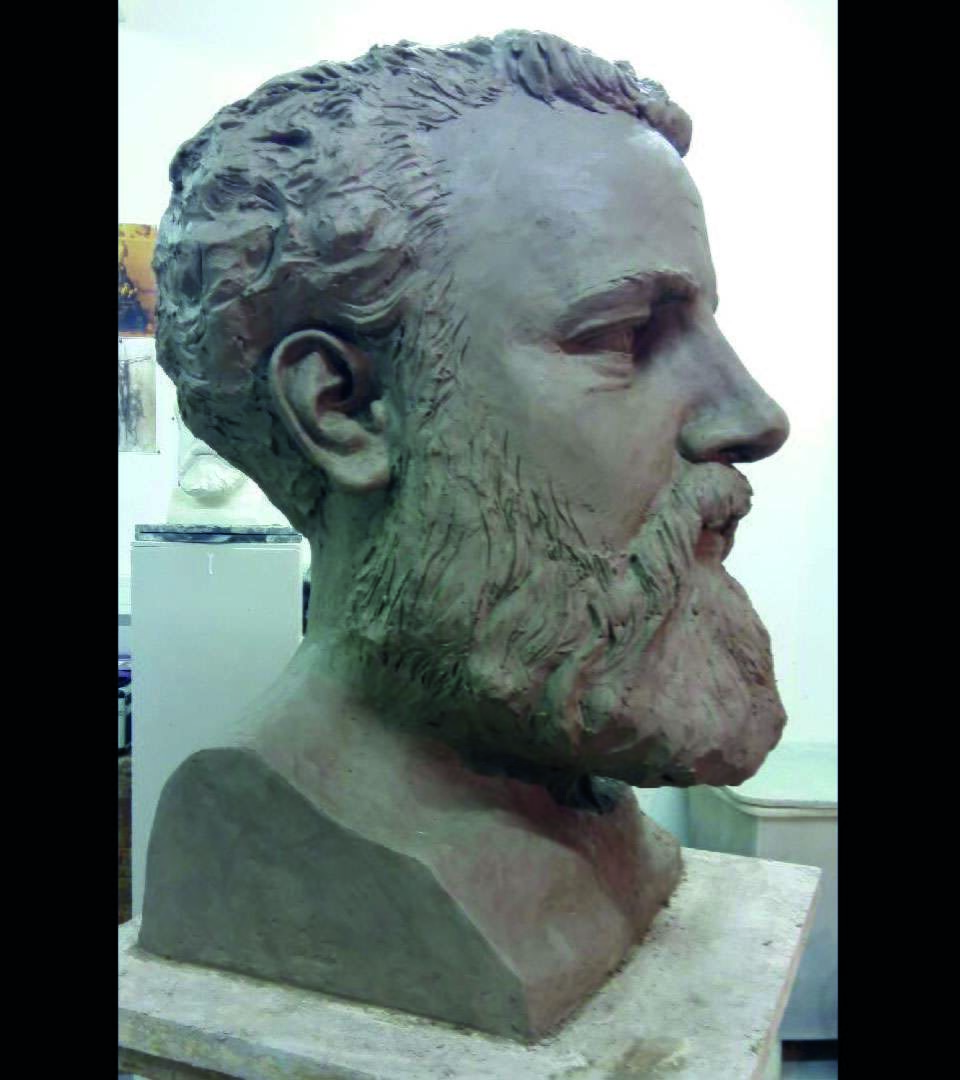
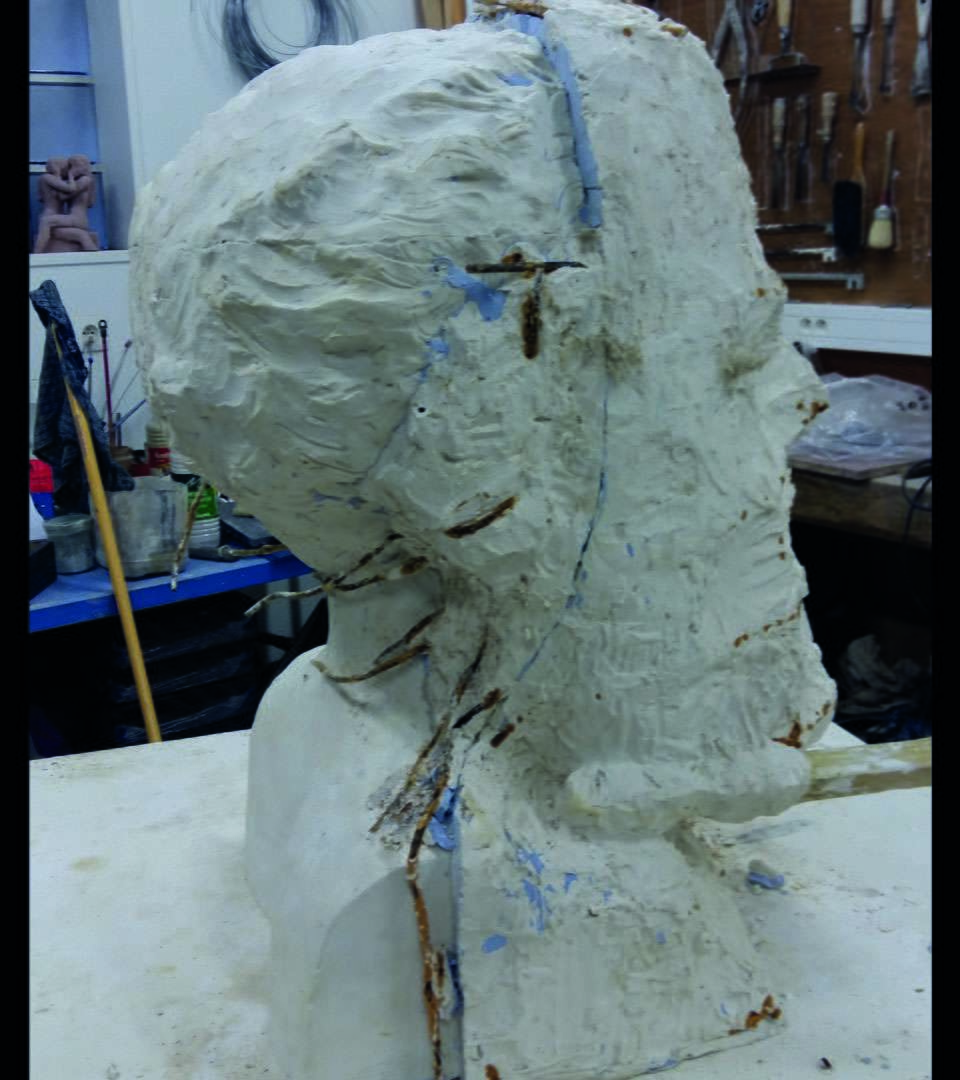
step 3
Hollow moulding in plaster
To preserve the work, because it is fragile, in clay, a plaster cast is made.
It requires creating parts for the opening. Here, 4 pieces, given the size of the head. Iron strengthens the various parts of the moulding. You then need to open the mould (break it) to find the plaster work cast inside with plaster and tow.
Elastomer moulding:
Now at the foundry to make the
bronze work, we start by making a moulding of the bust in elastomer to
create a wax version.
